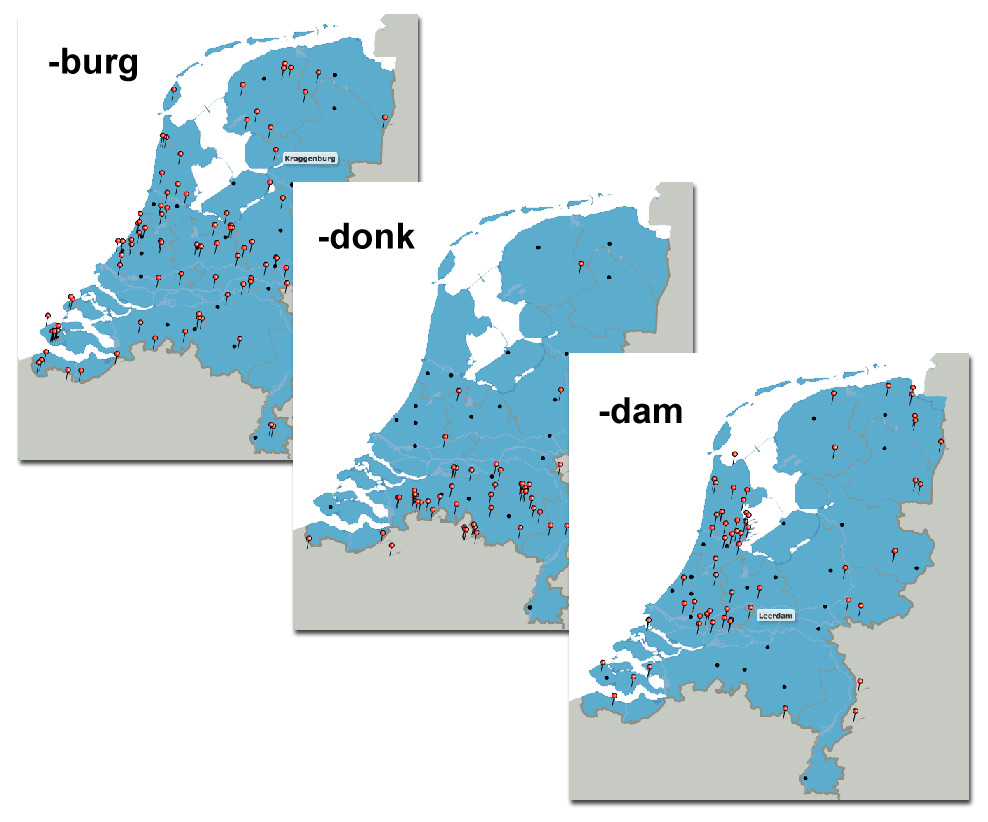|
4. Naming habits and changing attitudes to names |
||
|
Naming is often done by analogy: new names are given on the same pattern as already existing names in the area with which the name-givers are familiar. This is one of the reasons why certain name types tend to occur with greater frequency than others in particular areas. Another way of giving geographical names is to transfer existing names to new entities in order to compare them with or to commemorate the original place, through the process known as baptism. People are commemorated as well in many geographical names. In some cases, the written geographical names may tell us in a general way about the time spans of settlements. For example, Blok, in referring to Dutch-speaking parts of Europe, indicated that: names ending in: -burg or -ingen were recorded in the period of the 7th-9th century;
names ending in See image below for spatial distribution of placenames containing respectively -burg, -donk, and -dam.
|
||
|
Home | Self study : Cultural heritage | Contents | Intro | 1.Meaning | 2.Linguistic change | 3.Images | 4.Habits & attitudes (a/b/c) | 5.Colonisation names (a/b/c) | 6.Living museum | 7.Threats |
